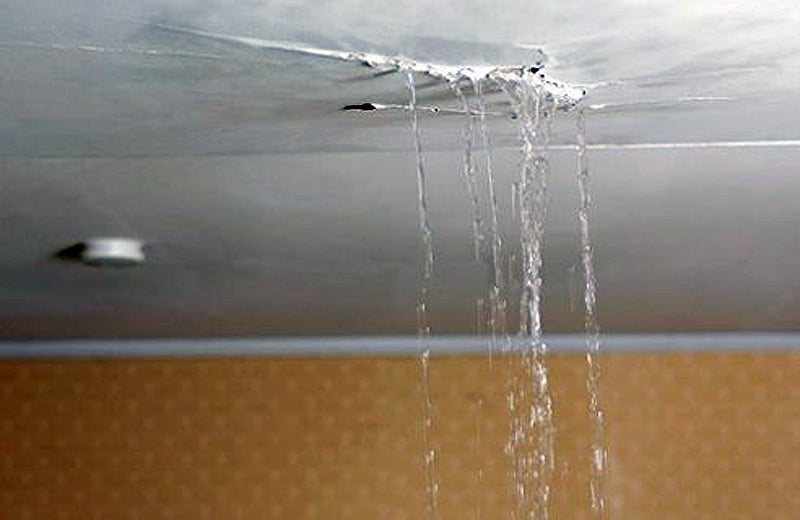Your House's Primary Typical Water Leak Causes: Examination
Your House's Primary Typical Water Leak Causes: Examination
Blog Article
Nearly everybody will have their own perception involving How to detect water leaks in your home.

Leaks not only trigger waste of water yet can additionally create unneeded damages to your home and promote unwanted organic development. However, water leakages could go undetected since most of the pipework in our home is hidden. By understanding and also looking for day-to-day scenarios that cause leaks, you can protect your home from future leaks and unneeded damages. Today, we will take a look at six leak creates that may be triggering your pipes to trickle.
Trespassing roots
Most water leakages start outside the home instead than inside it. You may notice wet spots or sinkholes in your backyard, as well as that could imply that tree roots are invading water lines triggering water to permeate out.
Corroded water supply
As time passes by, your plumbing system ages and corrosion such as corrosion might start eating away the pipelines. This could be the source of discoloration or bending on your water pipes. This requires an evaluation with your plumber quickly. Think about replacing the pipes because they are at a greater risk of rust than the more recent models if our plumbing system is old.
Defective Pipe Joints
The point at which your pipelines connect is often the weakest web link in the waterline. Pipeline joints can deteriorate in time, leading to water leakages. The majority of pipe joints are not conveniently noticeable. If you have loud pipelines that make ticking or banging noises, specifically when the hot water is turned on, your pipe joints are probably under a lot of pressure. It is a good idea to have your plumber check your system yearly.
Instant temperature level adjustments.
Severe temperature level modifications in our pipes can cause them to expand and also get suddenly. This development and also tightening may cause cracks in the pipelines, specifically if the temperature level are below freezing. It would be best if you kept an eye on just how your plumbing functions. The presence of the previously stated scenarios often suggests a high threat.
Poor Water Connectors
At times, a leakage can be caused by loosened hoses as well as pipelines that supply your devices. In case of a water links leakage, you might discover water running straight from the supply line or pools around your appliances.
Blocked Drains
Obstructed drains could be bothersome and inconveniencing, however they can occasionally end up creating an overflow bring about burst pipes. Maintain removing any type of products that may go down your drains that might obstruct them to prevent such hassles.
All the above are sources of leaks but not all water leaks result from plumbing leakages; some leakages might come from roof covering leakages. All leakages should be repaired quickly to avoid water damages.
Leakages not only cause waste of water but can likewise trigger unneeded damages to your residence and promote undesirable natural development. By recognizing and also looking for day-to-day situations that trigger leakages, you can secure your residence from future leakages and unneeded damage. Today, we will look at 6 leakage creates that might be creating your pipes to trickle.
At times, a leakage can be created by loosened hoses and pipes that supply your appliances. In case of a water connections leak, you may discover water running directly from the supply line or puddles around your home appliances.
How To Check For Water Leak In Your Home
How To Check for Leaks
The average household's leaks can account for nearly 10,000 gallons of water wasted every year and ten percent of homes have leaks that waste 90 gallons or more per day. Common types of leaks found in the home are worn toilet flappers, dripping faucets, and other leaking valves. These types of leaks are often easy to fix, requiring only a few tools and hardware that can pay for themselves in water savings. Fixing easily corrected household water leaks can save homeowners about 10 percent on their water bills.
To check for leaks in your home, you first need to determine whether you're wasting water and then identify the source of the leak. Here are some tips for finding leaks:
Take a look at your water usage during a colder month, such as January or February. If a family of four exceeds 12,000 gallons per month, there are serious leaks.
Check your water meter before and after a two-hour period when no water is being used. If the meter changes at all, you probably have a leak.
Identify toilet leaks by placing a drop of food coloring in the toilet tank. If any color shows up in the bowl after 10 minutes, you have a leak. (Be sure to flush immediately after the experiment to avoid staining the tank.)
Examine faucet gaskets and pipe fittings for any water on the outside of the pipe to check for surface leaks.
Undetected water leaks can happen without the home or business owner even realizing. If you suspect a water leak, but not able to find the source. It is time to contact a professional water leak detection service, The Leak Doctor.
How To Find a Water Leak In Your Home
https://www.leakdoctor.com/blog/How-To-Check-For-Water-Leak-In-Your-Home_AE197.html

I'm certainly very serious about Common Water Leaks In House and I hope you enjoyed reading our blog post. I beg you set aside a second to promote this page if you enjoyed it. Thanks a lot for taking the time to read it.
Book Service Report this page